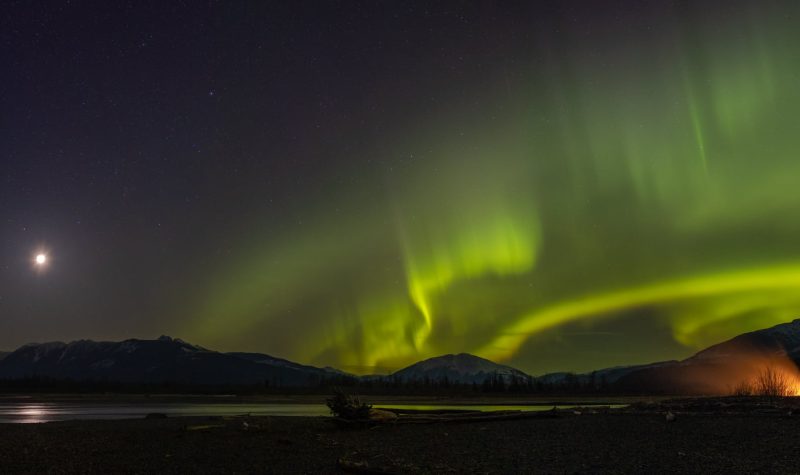The night sky was alight with dancing lights this past weekend in northern BC. Swaths of green, purple, yellow and oranges created a curtain in the sky bright enough to see with the naked eye from front yards between Terrace and Houston, BC.
In order to see the Northern Lights clearly, a few things needs to happen in the earth's atmosphere: firstly, the sun needs to have a solar flare (an explosion on the sun's surface) which launches particles and dust into space. Then, closer to earth, solar winds need to blow really hard. Because of that dust and wind, turbulence is created, and if they blow hard enough in our atmosphere, a geomagnetic storm culminates which results in disturbances in atmospheric light which is what we see as the Northern Lights.
Tom Burbee is a photographer in Terrace, BC. He has taken some absolutely stunning photos of the Northern Lights (and other natural phenomena) which you can view on his facebook or instagram page.
CICK News spoke to Tom to find out what tools a photographer or hobbyist needs to capture Norhtern Lights, which have been very active this year so far.
"Thanks to NASA and all the satellites that we have, there are satellites that are watching the sun for these CME (coronal mass ejection) or solar flares.
They take time to get here. Unlike the speed of light or radio frequency from a satellite communicating back to earth, which is much quicker, the the solar wind takes time for it to come from the sun to earth. That generally gives us anywhere from a few hours to get your camera ready. I think somewhere in between eight to twelve [hours]."
Walter Joseph is a Wet'suwet'en photographer (and fisheries and wildlife expert) who also posts some of the most stunning photos of the Northern Lights over Hudson bay Mountain and Kispiox Mountain ranges. Joseph said if you want to get started taking photos of the Northern Lights, "Perhaps the most important piece would be a good tripod, a good flashlight, warm clothes. If it's a good show, you're gonna be out for a long time. Yeah. So, keeping warm nothing will cut off your trip quicker than getting too chilled. Oh, and bear spray just in case."
Walter also gave this head's up: "It's an expensive hobby. The more you get into it, the more money you end up spending."
Listen to Pamela's full interview with Walter and Tom in the link below.


